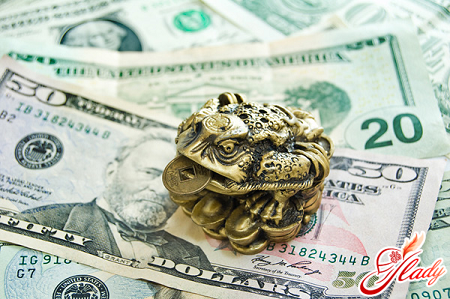 "Personal financial plan" - such "impressive"serious words. Immediately imagine a successful, but slightly tired bankers, with a "tenacious" look, business negotiations, heavy leather chairs. And then - a vacation in the Maldives, a personal yacht ... and already, it seems, you hear the casually thrown phrase: "Oh, I'm so tired of this sun!" Do you think that this is very far from you and completely unattainable? But is it? Most likely - you are mistaken. You just need to really want. And to help you come a kind of "wand-zashchalochka" - the plan. What is it and how to make a personal financial plan? There are no secrets. Strictly speaking, this is a plan of action that you must take to achieve certain goals.
"Personal financial plan" - such "impressive"serious words. Immediately imagine a successful, but slightly tired bankers, with a "tenacious" look, business negotiations, heavy leather chairs. And then - a vacation in the Maldives, a personal yacht ... and already, it seems, you hear the casually thrown phrase: "Oh, I'm so tired of this sun!" Do you think that this is very far from you and completely unattainable? But is it? Most likely - you are mistaken. You just need to really want. And to help you come a kind of "wand-zashchalochka" - the plan. What is it and how to make a personal financial plan? There are no secrets. Strictly speaking, this is a plan of action that you must take to achieve certain goals.
How it works?
Many people live "from salary to salary". Quite often this attitude to money is based on a feeling of uncertainty in the future. And the truth is - you never know what will happen tomorrow. And if today there is an opportunity to buy some nice little trifle, go to a restaurant or go to an expensive resort, should you deny yourself this? After all, all the same you will not be able to save up for an apartment / villa / yacht, why should you limit yourself in small things? However, sooner or later the moment comes when a person starts to think about what will happen to them in five, ten, fifteen years. Have you already asked yourself this question? And how, the answer you pleased? If not, then it's time to think about your personal financial plan. For how long should a financial plan be drawn up? It can be drawn up for any period of time - six months, a year, 5 years - it all depends on what you are aiming for. You need to focus on the most distant goal. For example, if your task is to "start living on interest" by the age of 50, and now you are 35, then the plan should be 15 years.
What does it give?
First of all, confidence in the future. You do not just let your future drift, but actively participate in its creation. Quite quickly you will begin to understand that those goals that previously seemed unattainable - are quite real. You can order your life and begin to feel proud. Self-esteem and cease to fear the future. Sounds tempting? But how to make your personal financial plan? Start with the simple.
Set goals
Of course, in order to begin to strictly plan- which means, in some way, to limit - one's own life, one needs an incentive. What can be such an incentive? Of course, the existence of a goal. Every person is different. Everyone has different dreams and aspirations. And the income level of all is different too. Therefore, the goals will differ. Imagine what you would like to achieve, say, years through 15. Can I buy a large apartment? Or send a child to study in England? Or go on a round-the-world trip? Do not be afraid to dream. However, your desires should be, after all, a bit "tied" to reality. Set specific deadlines for achieving goals. For example, in a year you want to buy a car, in five - an apartment, and after 15 - start living exclusively on interest from capital, ie. start getting a passive income.
Prioritize
Carefully review that list of goals and"The dreams" that you have made up. You did it on paper, right? Determine what is the most important of this, and what is secondary. It is quite easy to do this. Suppose you have two main tasks. The first is to buy an apartment. The second is to have a passive income of $ 3000 by the age of 40. What is more important from this? Let's say you already have some kind of housing - even if it's not quite what you would like. And while you are just afraid of panic old beggars. Then the main goal is getting passive income. But if you have three children and you do not have your "corner", you are tired of living with your parents or wandering about rented apartments, then, most likely, it is buying an apartment that will become the main task. The division into main and secondary tasks will help you understand what, in case of "malfunctions" of your plan, you can sacrifice, or which items should be adjusted.
Calculate income and expenses
If you have never been home beforeaccounting, then you have to start right now. Before you make a financial plan, you need to find out where your money is flowing. Very often people's ideas about spending are far from reality. You never tried to calculate how much money a month goes, for example, to buy chewing gum? Or cakes at the nearest cafe? Try it. The result may surprise you. Therefore, for the next 2-3 months - and this is how much it will take to get the full picture - at all, not even diamonds, but a pen, a thick notebook and a calculator become "best friends of girls". Be sure to collect all checks and write down even the most "penny" expenses. Break all the information into groups and put it in the table. For example, "utility payments are the amount", "food is the sum", "entertainment is the amount", etc. If you are keeping this kind of accounting for you, it's a usual thing, then you can immediately move on to the next item for preparing your personal financial plan.
Assets and liabilities - what is it?
Do not be afraid of specific terminology. Everything is very simple. Assets are everything that brings you income. Assets are bank deposits, securities, units of mutual funds. Liabilities are what lead to costs. For example, a bank loan, debts, etc. It is interesting that the same thing in different situations can be both a liability and an asset. How? Yes, it's very simple! For example, a car is a liability. You have to buy gasoline, spend money on maintenance, buy new parts, etc. But! If you start earning money by car - it will turn into an asset. The same with the apartment - while you live in it you have to pay rent, do repairs, buy new furniture - that is, spend money. And if you lease it and get income - it becomes an asset. Think about whether you have any liabilities that can be transferred to assets. For example, a plot of land that no one will ever practice. Or an old house in a remote village, inherited. Maybe some of this can be sold - even if inexpensive - and invest this money on favorable terms. Understood? 
Create protection
Unfortunately, life is unpredictable. Dismissal, another wave of financial crisis, an accident - all this can destroy any financial plan. Therefore, before you start investing - investing - "extra" money, you need to "hedge". That is, reduce the risks. Financial risks are the worst enemies of even the most carefully thought out plan. Of course, to insure for 100% of all the misfortunes and troubles still will not work, but to minimize the risk is quite possible.
What are the risks and how to reduce them?
The first group is unplanned expenditures andunemployment. Unplanned expenses are not necessarily a large sum. Repairing the washing machine, a visit to the dentist, an urgent purchase of a new TV, in return for the hopelessly broken old ... yes, what else is there. And every such expense will punch a small hole in the design of your financial plan. And what can we say about the sudden loss of work? How to insure yourself against this? Financial advisors recommend creating a "reserve fund". What it is? This is a certain amount, sufficient to ensure that, without external financial income, you could safely "hold out" for 3-6 months. Reserve fund is better stored in the bank account with the possibility of replenishment and partial withdrawal. Usually, the interest rate for such an account is 5-8% per annum. The second group is illnesses and accidents. Even ordinary cycling can result in a long "rest" in the hospital. Have you ever wondered in what position your children will be if something happens to you suddenly? In order to protect yourself from such situations, you can use the program of voluntary medical insurance and life insurance. The cost of insurance is not so great - a year about one percent of the sum insured. Also do not forget to buy insurance for traveling abroad. Then, if necessary, you can get free medical care there. The third group is property risks. Fire in the country, flood in the apartment, car theft - such situations, unfortunately, not uncommon. To "fight" with them takes a lot of effort, time and, of course, money. Take advantage of property insurance programs. This is especially true if you rent an apartment or rarely visit your dacha. The fourth group is "damage to third parties". This situation is very familiar to most motorists. In addition to mandatory compulsory motor third party liability insurance, you can also use voluntary DSAGO. This will "save" you if the amount of payments for compulsory insurance does not cover the amount of damage. Protection of the future. To solve this problem, you can use rechargeable bank accounts or insurance programs of non-state pension funds. Insurance contracts are concluded, as a rule, for at least 10 years. Therefore, investments are recommended to be made in convertible currencies - dollars, euros or Swiss francs.
Counting
At this stage, in order to understand howmake a personal financial plan, you need to "reduce your debit with a loan." Calculate your monthly income and add to it the profit received from the assets. Take the cost out of the amount received. The resulting amount is an investment potential. Properly investing this money can receive a stable income. It sounds tempting! But how and where to invest these very money, so as not to "burn out" and not lose the last? To begin with, you need to decide whether you will determine the investment strategy yourself, or seek help from a financial advisor. Unfortunately, in either case, there is some risk.
Types of investors
Regardless of which of the options are youchoose, it would be nice to determine in advance which type of investor you belong to. What are the types of investors? Conventionally, they can be divided into three main groups.
- Group one is a conservative investor
Such people carefully weigh their every step andthey agree to invest only if they are absolutely sure of a successful outcome. For a conservative depositor, the most important thing is to save your investments. He never takes risks and takes all measures to protect his capital. Of course, at the same time, the incomes of a conservative investor are small - this type of investment usually yields 3-5% per annum. But they are stable! As a rule, the "conservative" never loses and slowly but surely achieves the set goals. If you belong to this type of investor, then you are recommended to keep at least 60% of your investment potential on bank deposits or invest in savings insurance programs.
- The second group is a moderate investor
Moderate investor, of course, is also importantTo save his savings, but he does not want to be content with the minimum income. So sometimes he runs the risk. But at the same time, it always tries to maintain a balance between low-risk and risky investments. In case of a loss, he will repay his debts due to the income from "win-win" investments. Moderate investments bring, as a rule, 10-12% per annum. Financial advisors usually recommend that moderate investors split the "investment portfolio" into two equal parts. Half invest in bonds and shares, and the second part - put on deposit or make insurance programs. Suitable, too, mixed mutual funds.
- The third group is an aggressive investor
The main objective of an aggressive investor is "to put togetherstate". Therefore, he focuses on high-risk stocks. Of course, if successful, such securities yield the highest return. People of this type can both become rich in one transaction and become bankrupt. On average, with a successful "scenario", an aggressive investor gets 12-20% per annum. As a rule, aggressive investors are professionals who clearly represent what they are dealing with. If you treat yourself to this type of investors - safely invest most of the savings in hedge funds, stocks and mutual funds. However, forget about conservative investment is also not worth it. How to define to which type of investors do you belong? Well, firstly, it depends on sex and age. As a rule, women are more cautious than men. And young investors are more fearless than middle-aged people. Although, of course, there are exceptions to any rule. Also, in order to better understand yourself, you can use special psychological tests.
Drawing the table
Well, you are almost there. The most important thing is to systematize all the information and begin to implement your personal financial plan. In order for everything to be clear, it is best to make a table. There are two ways. Method one. It is for those who have the phrase "make a table" causing an attack of unrestrained yawning. If all these calculations / calculations are too painful for you, if you feel that you "get stuck" in them, make it easier - ask your financial adviser for help. By the way, most start-up investors do just that. However, here there is one minus - your expenses will be replenished with one more item. Method two. He - for the stubborn. For those who want to thoroughly understand how to make a personal financial plan. Sit comfortably on the computer, put a calculator next to it and tell your "home" that they will not bother you for 2-3 hours. Open Excel and draw a table:
- Count first. "Year". In this column are introduced, in increasing order, all the years, beginning with the current and ending with the year "the realization of dreams."
- The second graph. "Capital at the beginning of the year." Compare income and expenses for the previous year. Add to this amount all the savings that you have at the moment. You already put them on a bank deposit, right? So, get 5-8% per annum.
- Count three. "Amount of investment". This is the money that you invest at the end of the year. In order to determine it, you first need to find out how much money you will have on the replenish bank deposit. Having calculated this amount, you need to take away from it your "reserve fund". Have not you forgotten yet? This - money, which should be enough for 3-6 months of a comfortable life.
- Count four. "Financial goals". Enter all your dreams with the line of the year in which you expect to implement them.
- Count five. "Investment operations". In this column there will be three columns at once: "conservative", "moderate" and "aggressive". You have already decided what type of investor are you?
- That's "scatter" the amount from the third column - "the amount of investment" - on the columns, in accordance with their views.
- Count six. "Funds left after investing". This is your insurance reserve. Therefore the number in this graph should never change.
- Count Seven. "The state of investment." It also needs to be divided into 3 columns: "conservative", "moderate" and "aggressive". The number in it will show how much your investments have grown.
- Count eighth. "Balance at the end of the year." In order to fill in this column, it is necessary to add the numbers written in the sixth and seventh columns. From this amount, take away the money spent on the realization of financial goals.
- All! The table is full.
Then the number obtained in the eighth column will have to be copied to the second column of the next year.
Summing up
Look attentively at the "work of your hands." If all the numbers in the table have a positive value, everything is in order. So, you correctly assessed your capabilities and your goals are quite achievable. Now the main thing is not to step back and follow the plan clearly. Something does not converge? Dont be upset! After all, the financial plan is not something unshakable - it can, and sometimes it is necessary, make adjustments. Due to what it can be done? There are several possibilities. For example, you can increase the time frame for achieving one or another goal. Or plan a purchase is not a five-and a three-room apartment. You can once again carefully weigh all your "dreams". Perhaps, some of them are not so important for happiness? After all, in fact, the most important goal is to gain confidence and become a successful and prosperous person. And on the way to this goal you have already made a very big step. So, all of you will definitely succeed!









